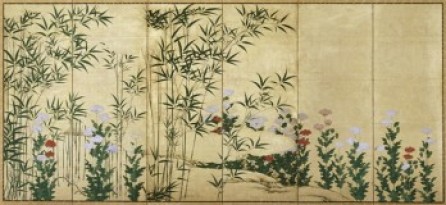Do Ho Suh’s “Gate” Leads SAM Visitors Through 5,000 Years of Asian Art
Invited to provide a contemporary response to the historical material, internationally recognized artist Do Ho Suh created a new multimedia installation for the exhibition Luminous: The Art of Asia, on view at SAM Downtown until January 8, 2012.
Born in Korea and presently living in New York and London, Suh is the creator of the Seattle Art Museum’s famed dog-tag sculpture Some/One. Over the past year Suh and SAM have engaged in a dialogue on topics such as eastern philosophy, East Asian painting, the contemporary art scene, and art museum practices.
Suh’s installation, titled Gate, was commissioned exclusively for Luminous and transforms one of the artist’s existing fabric pieces into a screen for projection as well as a space of transition.
“Like the moment of enlightenment in Zen Buddhism, passing through a gate takes only a split second, and then it’s over,” Suh explains. “But so many things happen in such a short period of time. With this work, I wanted to extend that moment of passage, to delay it, if only for an instant, to provide the viewer that moment of insight.”
“Our notion of emptiness is quite different in the East,” Suh explains. “The void is not empty or bleak but charged with meaning.”
Watch the videos below to hear more from Suh, to see Gate in action and to take a behind-the-scenes look at the installation of the piece.
